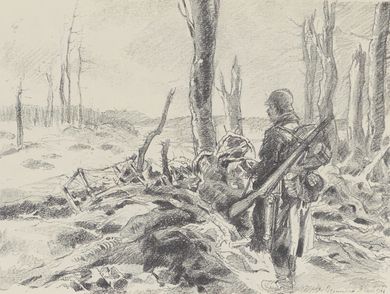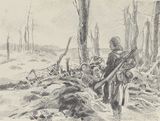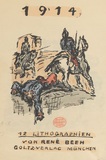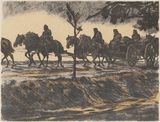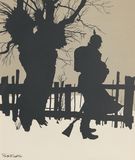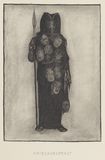War Painting and Graphics
Death the artist, who paints with powder and red blood, now controls the brush.
Anton Jaumann, German Art and the War, 1914
War art primarily reflected the experiences at the front. Idealisation and interpretation took second place behind the reporting of events. Field reports were completed with crayon and palette.
The artists were very keen. Applications were made to the Ministry of War to become official war reporters on behalf of the army. In contrast to earlier wars, it was no longer possible to depict battles as a whole. The military techniques and the movements of the soldiers demanded the representation of episodes, excerpts and individual scenes.
Censorship was widespread: exaggerated scenes of horror, depictions of the dead or prisoners were to be avoided.
During the course of the war and the increasing horror, desperation became apparent above all the paintings by the Expressionists. The war participants Max Beckmann, Hans Baluschek and Otto Dix ultimately replaced their initial patriotism with anti-war art

